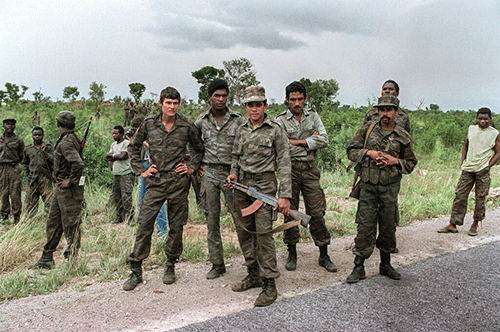Cuban ambassador to Namibia Sidenio Ascota Aday has said the heroic battle of Cuito Cuanavale, which culminated in the abolition of the apartheid regime in South Africa and the independence of Namibia, involved 40 000 soldiers from Cuba, Angola, and Namibia, which included more than 500 tanks, thousands of artillery, and 1 000 anti-aircraft weaponry.
Aday said this yesterday at the annual commemoration of Southern African Liberation Day. Thirty-three years ago, the small town of Cuito Cuanavale of approximately 95 000 inhabitants and 35 610 square kilometres, in the province of Cuando Cubango, in southern Angola, was the epicentre of one the fiercest conventional battles in African history.
From November 1987 to March 1988, thousands of combatants from the People’s Armed Forces of Liberation of Angola (FAPLA) supported by the Peoples Liberation Army of Namibia (PLAN) and the Cuban Revolutionary Forces waged a war and defeated the mighty armed forces of the apartheid regime of South Africa.
Since 2019, SADC has commemorated 23 March as the day that marked the end of one of the fiercest conventional battles at Cuito Cuanavale where forces of the South African apartheid regime were defeated, leading to the independence of Namibia and the creation of a non-racial democratic South Africa as well as the consolidation of the independence and sovereignty of Angola.
Aday, speaking at a low-key event held at the National Museum of Namibia with pupils from various schools in Windhoek, said the heroism displayed by Angolans, Namibians and Cubans could be appreciated in a phrase written by one of the apartheid invaders in the remains of a ruined building at the scene of the battle: “The MIG 23 [fighter aircraft] broke our hearts”.
“In Cuito Cuanavale, the Cuban Revolution risked everything, even its very existence, in combat against one of the strongest powers located in Africa, against one of the richest powers, with an important industrial and technological development, well-armed.”
He said Cuito Cuanavale forced South Africa to respect the integrity of Angola and guarantee the independence of Namibia at the negotiating table.
Those events, he said, had also profoundly influenced the life of South Africa itself, and it was one of the reasons, motivations and incentives that drove the apartheid regime to admit solving the problem in Angola and Namibia, the forces fighting apartheid also received benefits of our struggles.
“In Cuito Cuanavale, the combative brotherhood of the Cuban armed forces, FAPLA and PLAN of Swapo was reaffirmed once again,” he said.
“The revolutionary solidarity of the Cuban, Angolan, Namibian and the anti-apartheid forces in South Africa was consolidated forever,” he added.
According to Aday, the will of the Cuban, Angolan and Namibian people to fight for freedom, independence and national sovereignty “was written with blood on the battlefields”.
“Cuba returned only with our fallen comrades,” he said.
Meanwhile, acting head of department of multilateral relations and cooperation, ambassador Jerobeam Shaanika said the day honours the sons and daughters who sacrificed their lives and paid the ultimate price in the struggle for the political liberation and economic freedom of the region.
“We honour the brave sons and daughters of the region and their fellow internationalist fighters who made supreme sacrifice in lighting the flame of freedom and whose blood watered the tree bearing the fruits we enjoy today,” Shaanika said in a statement.
Likewise, he said, Namibia salute the visionary founders of SADC whose foresight of Southern Africa moving towards political liberation has been translated into reality.
- ktjitemisa@nepc.com.na


